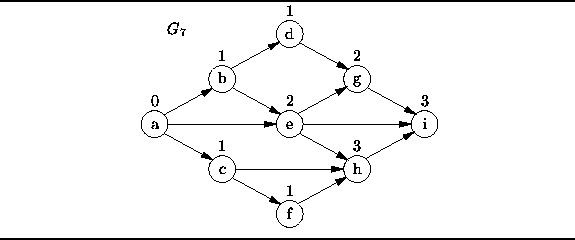|
Data Structures and Algorithms
with Object-Oriented Design Patterns in C# |
A topological sort is an ordering of the vertices of a directed acyclic graph given by the following definition:
Definition (Topological Sort) Consider a directed acyclic graph. A topological sort of the vertices of G is a sequence
in which each element of
appears exactly once. For every pair of distinct vertices
and
in the sequence S, if
is an edge in G, i.e.,
, then i<j.
Informally, a topological sort is a list of the vertices of a DAG
in which all the successors of any given vertex
appear in the sequence after that vertex.
Consider the directed acyclic graph ![]() shown in Figure
shown in Figure ![]() .
The sequence
.
The sequence ![]() is a topological sort
of the vertices of
is a topological sort
of the vertices of ![]() .
To see that this is so,
consider the set of vertices:
.
To see that this is so,
consider the set of vertices:
![]()
The vertices in each edge are in alphabetical order, and so is the sequence S.

Figure: A directed acyclic graph.
It should also be evident from Figure ![]() that
a topological sort is not unique.
For example, the following are also valid topological sorts
of the graph
that
a topological sort is not unique.
For example, the following are also valid topological sorts
of the graph ![]() :
:

One way to find a topological sort
is to consider the in-degrees of the vertices.
(The number above a vertex in Figure ![]() is the in-degree of that vertex).
Clearly the first vertex in a topological sort must have in-degree zero and
every DAG must contain at least one vertex with in-degree zero.
A simple algorithm to create the sort goes like this:
is the in-degree of that vertex).
Clearly the first vertex in a topological sort must have in-degree zero and
every DAG must contain at least one vertex with in-degree zero.
A simple algorithm to create the sort goes like this:
Repeat the following steps until the graph is empty: